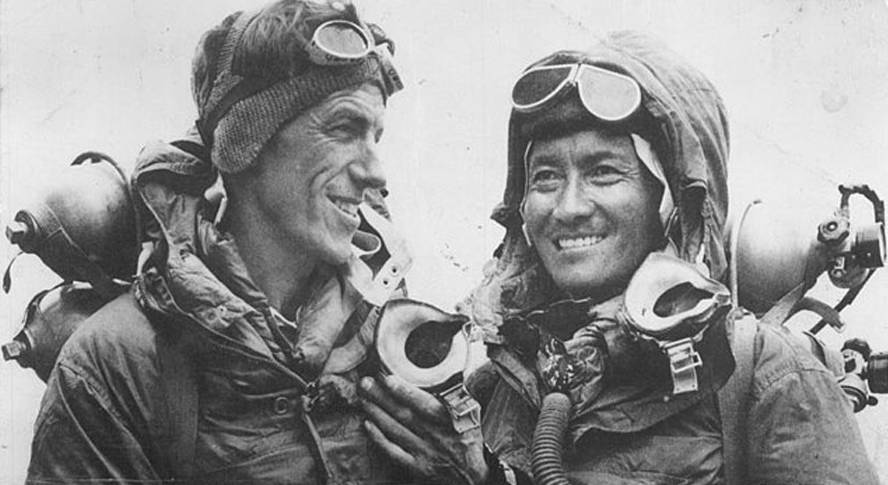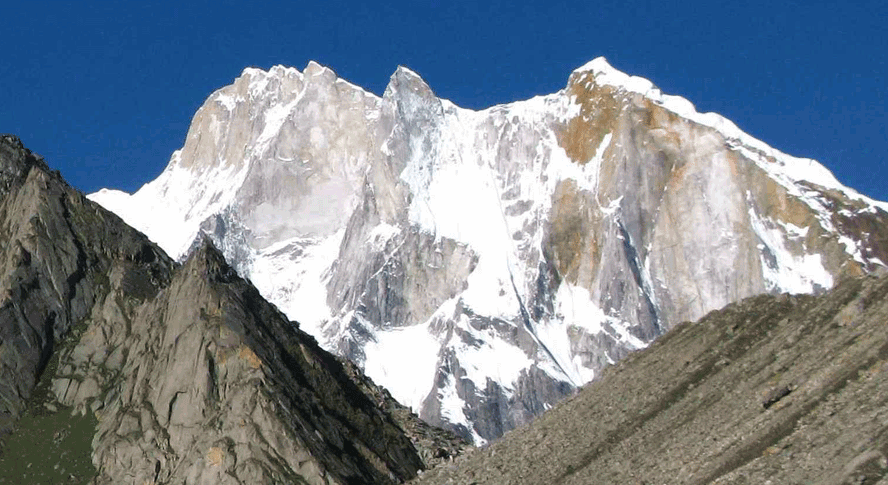“The game in climbing is cut that line as fine as you can, but you don’t want to take stupid risks. If you die taking a stupid risk, not only are you dead but you’ve embarrassed yourself, disgraced yourself. You’re not supposed to take risk lightly. You’re supposed to show that you're so good and so controlled, you can take it right to that line and go no further.” - Jon Krakauer
On May 29, 1953, Sir Edmund Hillary and Sherpa mountaineer Tenzing Norgay made history by being the first to reach the summit of Everest. It took them a grueling 16 days to reach the top, and once there, they stayed a mere 15 minutes before beginning their descent. Summiting the mountain, whose elevation is a near-incomprehensible 29,031.7 feet, was previously thought impossible, and all attempts for the prior 32 years had ended in defeat. The duo’s achievement echoes as an unquestionable testament to their persistence, determination, and capacity to suffer and exemplifies the human spirit.

Fast forward 70 years, and now hundreds attempt to emulate the feat annually. Piling into a narrow window when the Himalayan weather conditions are bearable, mostly in late May, they eagerly line up to make their way to the summit of Everest. The government of Nepal is eager too: the impoverished nation collects giant permit fees from each climber, incentivizing the country to become laxer on exactly how many permits it gives and who they are given to.
Even following a pre-defined route, with modern equipment, supplemental oxygen, and the hiring of local commercial trekking companies that provide veteran Sherpa guides, pre-fixed ropes, and pack animals to shuttle gear, most adventurers are forced to concede to the brutal environment and turn around. Others are much less fortunate. Along with the possibilities of exhaustion, exposure, heart attack, falling, falling ice, avalanche, and altitude sickness, inexperienced climbers threaten the safety of all they are with, and the recent occurrence of overcrowding has forced standstills. 310 climbers have died. Most of their bodies, too difficult to recover, now decorate the mountainside. Complementing them is a growing amount of trash and discarded gear.
Nevertheless, those who successfully make the ascent and return achieve something that relatively few will. All possible support still barely puts up a fight against the awesome powers of nature. Of all attempts, there have been just over 11,000 successful ascents made by just over 6,000 climbers.
However, for the elite of the elite, Everest is far from the pinnacle challenge. K2, a mountain in the Kashmir region of Asia, is the second-highest peak on the planet but is much more difficult. Annapurna I, another peak in the Himalayas, has seen 58 deaths in a mere 158 attempts. Yet, far beyond those is one that is truly in a league of its own: Meru Peak
Meru Peak, unknown to most, is also located in the Himalayas, northwest of Mount Everest and past Nepal, in the Indian state of Uttarakhand. It has three distinct peaks: the southern peak (6,660 meters, 21,850 ft), the central peak(6,310 meters, 20,700 ft), and the northern peak (6,450 meters, 21,160 ft).1 Counterintuitively, the higher two peaks were each successfully summited before the central peak. In 2001, elite Russian climber Valery Babanov reached the summit of the central peak by following the "Shangri-La" route. Even more impressive, he did it as a solo ascent. But even that is not the ultimate challenge in the mountaineering world. The central peak also has a separate route known as the Shark’s Fin. Just left of the snow slope centered in the picture above, it is unequivocally the most difficult climb in the world.
The Shark’s Fin’s difficulty stems from several sources, the first of which is its incredible complexity, with different parts requiring equally masterful levels of different climbing styles - ice climbing, snow climbing, rock climbing, aid climbing, and mixed climbing. Those technical difficulties necessitate different gear, which adds weight. Extra weight is exactly what you don’t want when a great deal of the trek is a vertical wall of pure rock, which is not only oppressive to climb but leaves you fully exposed to weather that can only be described as merciless. And if that wasn’t enough, there’s even a stretch that is overhanging - angled greater than 90 degrees. Pack animals won’t work. There are no Sherpas. If you attempt the Shark’s Fin, you are truly on your own. You’d have to be crazy to do it.
Some have tried.
The first attempt made on the Shark’s Fin was in 1986 by legendary American climber Mugs Stump. He failed due to an avalanche on the lower slopes. His second attempt, made in 1988, would be cut short by an intense snowstorm. 9 attempts from various teams were made between 1993 and 2006, to no avail.
In 2008, Conrad Anker, who had been mentored by Mugs Stump and previously attempted the feat in 2003, teamed up with Jimmy Chin and Renan Ozturk. They nearly made it, climbing to within 150 meters of the summit before being forced to abandon their goal - storms had pinned them down for 4 days in their portaledge tent, and they had run out of food. In 2009, a separate trio attempted the same route without success. These attempts pushed the climbers to their physical and mental limits and included frostbite, trench foot, lack of food, exhaustion, broken equipment, and broken bones, but somehow produced 0 deaths.
In October of 2011, the same trio who previously found themselves just shy of the summit, comprised of Conrad Anker, Jimmy Chin, and Renan Ozturk, set out to try again. Their entire journey, from first attempt to second, as well as near-death injuries in between, is a harrowing tale that paradoxically goes both better and worse than you expect and can be followed in the 2015 documentary with the only appropriate name: Meru. If you watch it, it will undoubtedly be from the comfort of someplace much warmer than Meru Peak, and yet, you will still feel the dark, biting cold snapping through you. The film juxtaposes the beauty and savagery of nature while exploring the true meanings of risk and sacrifice in a truly irreplicable way.
“They say the best Alpinists are the ones with the worst memory.” - Jimmy Chin
If the reward is greatness, what risks rest on the other side of the scale? For each vocation, that question may be answered very differently. But for those that reached the top, if asked what they were willing to sacrifice to get there, the answer may be simple: everything else.
Here are the return histories of many dubbed the world’s greatest investors:
Reducing entire careers down to two numbers makes it easier to compare them, but the above results surely do not capture the true highs and lows each faced, hidden risks, or sacrifices made. I wonder how many people are currently climbing at an unsustainable pace in an effort to top such a list. They fail to realize that excluded from above are the countless people that lost everything chasing a notion of greatness that others defined.
There is no real peak. Guided by the idea of compounding wealth without limit, you can, in theory, keep climbing forever if you choose. Try to do it fast enough, and you will likely meet exhaustion. Too slow, exposure. And even if you have the skill and fortitude, there are always risks outside of your control - perhaps a storm or avalanche will find you, and gravity will have its way.
The most impressive aspect of the above list isn’t the rates at which they compounded but rather the duration of which they’ve done so. When heading out into the world and charting your own path, the reward of survival seems greater than any other. As Krakauer said: you’re supposed to show that you're so good and so controlled, you can take it right to that line and go no further.
Everyone has their own line.
I don’t know where greatness ends, but it starts with finding where that line is.
Questions or thoughts to add? Comment on the site or message me on Twitter.
Disclaimer
This publication’s content is for entertainment and educational purposes only. I am not a licensed investment professional. Nothing produced under the Invariant brand should be thought of as investment advice. Do your own research. All content is subject to interpretation.
Meru Peak, as per above, is extremely difficult and should not be confused with that of Mount Meru in Tanzania, which is moderately difficult for an average hiker but can be consistently summited over 4 days’ time.






When I look at that list of investors the ones over 20 years are impressive as most likely have gone through vastly different market conditions. So few in reality that I don't think is realistic for the avenge investor. I am personally looking for 8-12% and trying to stick to things that I can look out 5 years (hopefully) that are not that complex. How are you finding your line?
Just stumbled upon your substack. I enjoy your writing style and prose. Well done!